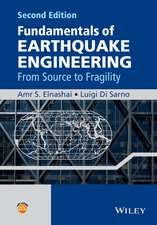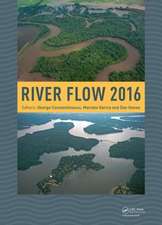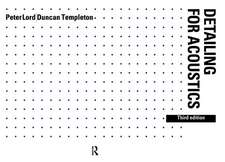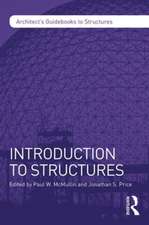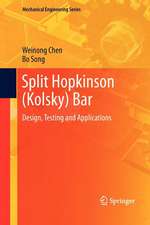Virtual Testing and Predictive Modeling: For Fatigue and Fracture Mechanics Allowables
Editat de Bahram Farahmanden Limba Engleză Paperback – 29 noi 2014
| Toate formatele și edițiile | Preț | Express |
|---|---|---|
| Paperback (1) | 703.52 lei 6-8 săpt. | |
| Springer Us – 29 noi 2014 | 703.52 lei 6-8 săpt. | |
| Hardback (1) | 956.99 lei 6-8 săpt. | |
| Springer Us – iul 2009 | 956.99 lei 6-8 săpt. |
Preț: 703.52 lei
Preț vechi: 827.67 lei
-15% Nou
Puncte Express: 1055
Preț estimativ în valută:
134.62€ • 140.84$ • 111.83£
134.62€ • 140.84$ • 111.83£
Carte tipărită la comandă
Livrare economică 03-17 aprilie
Preluare comenzi: 021 569.72.76
Specificații
ISBN-13: 9781489983701
ISBN-10: 1489983708
Pagini: 432
Ilustrații: XXIII, 407 p.
Dimensiuni: 155 x 235 x 23 mm
Greutate: 0.6 kg
Ediția:2009
Editura: Springer Us
Colecția Springer
Locul publicării:New York, NY, United States
ISBN-10: 1489983708
Pagini: 432
Ilustrații: XXIII, 407 p.
Dimensiuni: 155 x 235 x 23 mm
Greutate: 0.6 kg
Ediția:2009
Editura: Springer Us
Colecția Springer
Locul publicării:New York, NY, United States
Public țintă
ResearchCuprins
Virtual Testing and Its Application in Aerospace Structural Parts.- Tools for Assessing the Damage Tolerance of Primary Structural Components.- Cohesive Technology Applied to the Modeling and Simulation of Fatigue Failure.- Fatigue Damage Map as a Virtual Tool for Fatigue Damage Tolerance.- Predicting Creep and Creep/Fatigue Crack Initiation and Growth for Virtual Testing and Life Assessment of Components.- Computational Approach Toward Advanced Composite Material Qualification and Structural Certification.- Modeling of Multiscale Fatigue Crack Growth: Nano/Micro and Micro/Macro Transitions.- Multiscale Modeling of Nanocomposite Materials.- Predictive Modeling.- Multiscale Approach to Predicting the Mechanical Behavior of Polymeric Melts.- Prediction of Damage Propagation and Failure of Composite Structures (Without Testing).- Functional Nanostructured Polymer–Metal Interfaces.- Advanced Experimental Techniques for Multiscale Modeling of Materials.
Textul de pe ultima copertă
Virtual Testing and Predictive Modeling: For Fatigue and Fracture Mechanics Allowables provides an overview of cost and time efficient methods in generating the fatigue and fracture data of industrial structural parts.
Readers will find a systematic introduction to virtual testing to generate fatigue and fracture allowables through two useful techniques: the conventional continuum mechanics approach, and the utilization of multiscale modeling and simulation techniques to predict materials’ properties. In addition, a chapter devoted to the functionalization process covers the current approach to this technique, which strengthens interface durability through bonding dissimilar materials. Coverage of verification methods, used with devices such as the Transmission Electron Microscope (TEM) and the Atomic Force Microscope (AFM), are also described, which motivate discussion of the fundamental structure and deformation processes of nanoscale materials.
The virtual testing continuum approach already plays a crucial role in the life assessment of important manufactured structural parts in the aerospace, automotive, aircraft and defense industries when data is inaccessible to engineers. Virtual Testing and Predictive Modeling: For Fatigue and Fracture Mechanics Allowables provides a unique applications-focus view into these valuable methods, filling a critical void in references currently available.
Readers will find a systematic introduction to virtual testing to generate fatigue and fracture allowables through two useful techniques: the conventional continuum mechanics approach, and the utilization of multiscale modeling and simulation techniques to predict materials’ properties. In addition, a chapter devoted to the functionalization process covers the current approach to this technique, which strengthens interface durability through bonding dissimilar materials. Coverage of verification methods, used with devices such as the Transmission Electron Microscope (TEM) and the Atomic Force Microscope (AFM), are also described, which motivate discussion of the fundamental structure and deformation processes of nanoscale materials.
The virtual testing continuum approach already plays a crucial role in the life assessment of important manufactured structural parts in the aerospace, automotive, aircraft and defense industries when data is inaccessible to engineers. Virtual Testing and Predictive Modeling: For Fatigue and Fracture Mechanics Allowables provides a unique applications-focus view into these valuable methods, filling a critical void in references currently available.
Caracteristici
Provides cost-effective and efficient approaches to obtain fatigue and fracture data Describes virtual testing techniques that prove adequate life in manufactured structural parts Written with a unique emphasis on applications beneficial to industry professionals Includes supplementary material: sn.pub/extras




